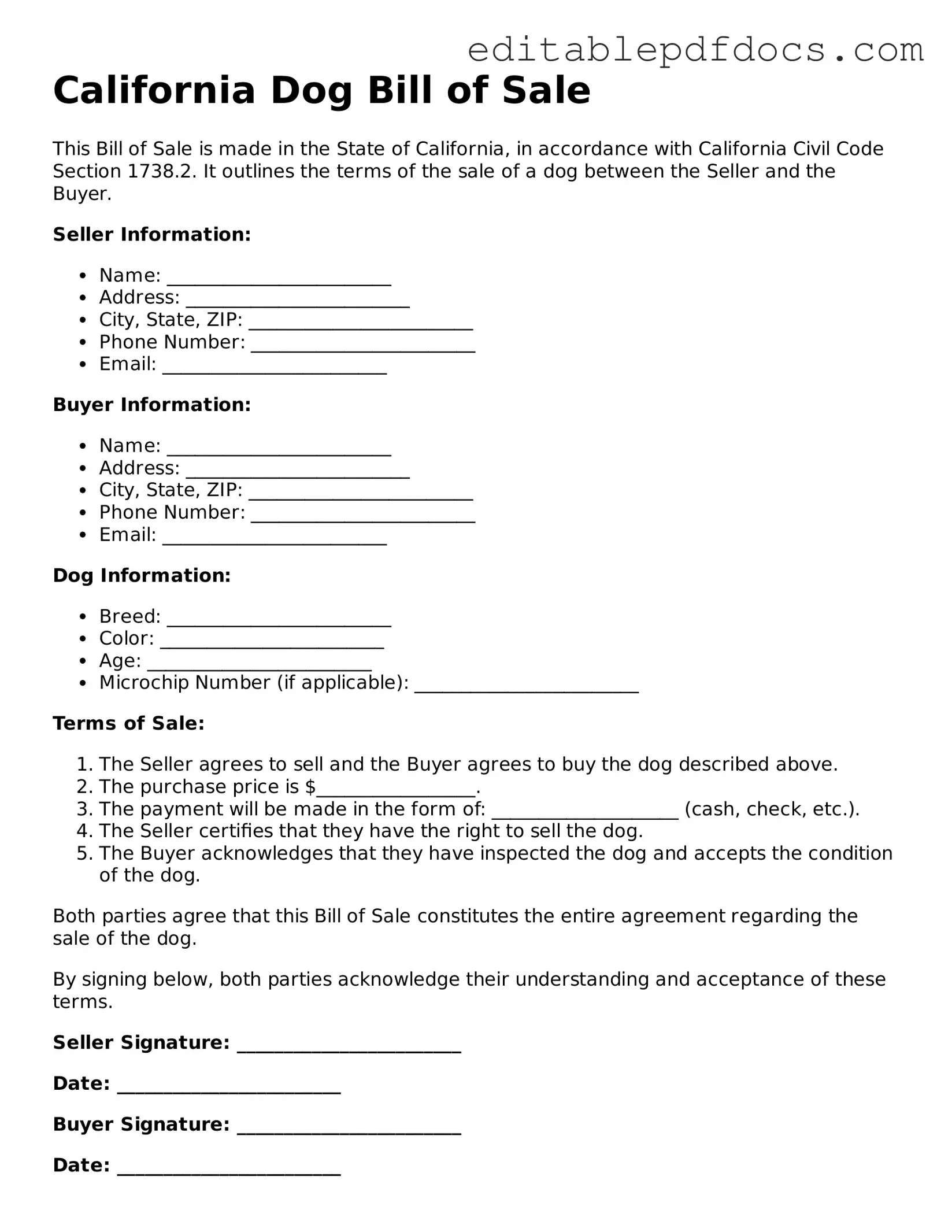When it comes to transferring ownership of a dog in California, many people turn to the Dog Bill of Sale form. This document is crucial for both the seller and the buyer, as it serves as proof of the transaction. However, several common mistakes can lead to complications down the road. Understanding these pitfalls can help ensure a smooth process.
One frequent error is failing to provide accurate information about the dog. It's essential to include details such as the dog's breed, age, and any identifying features. Incomplete or incorrect information can lead to disputes later on. Buyers need to know exactly what they are getting, and sellers must accurately represent their pet.
Another mistake is not including the purchase price. This detail may seem trivial, but it is vital for establishing the terms of the sale. Without a clear amount listed, both parties may have different expectations regarding the transaction. This omission can create confusion and potential legal issues in the future.
Many people also overlook the importance of signatures. Both the seller and the buyer must sign the Dog Bill of Sale to validate the agreement. Without signatures, the document lacks legal standing. It's a simple step that can easily be forgotten in the excitement of the sale, but it’s crucial for ensuring that both parties are bound by the terms of the agreement.
Additionally, some individuals neglect to retain copies of the completed form. After signing, it’s wise for both parties to keep a copy for their records. This documentation can serve as proof of ownership and may be necessary for future veterinary visits or licensing. Losing the form can lead to complications if questions about ownership arise later.
Finally, many people fail to check local regulations regarding dog sales. California has specific laws that may affect the transaction, such as requirements for vaccinations or microchipping. Being unaware of these regulations can lead to fines or other legal issues. It’s always best to do some research before finalizing any sale.
